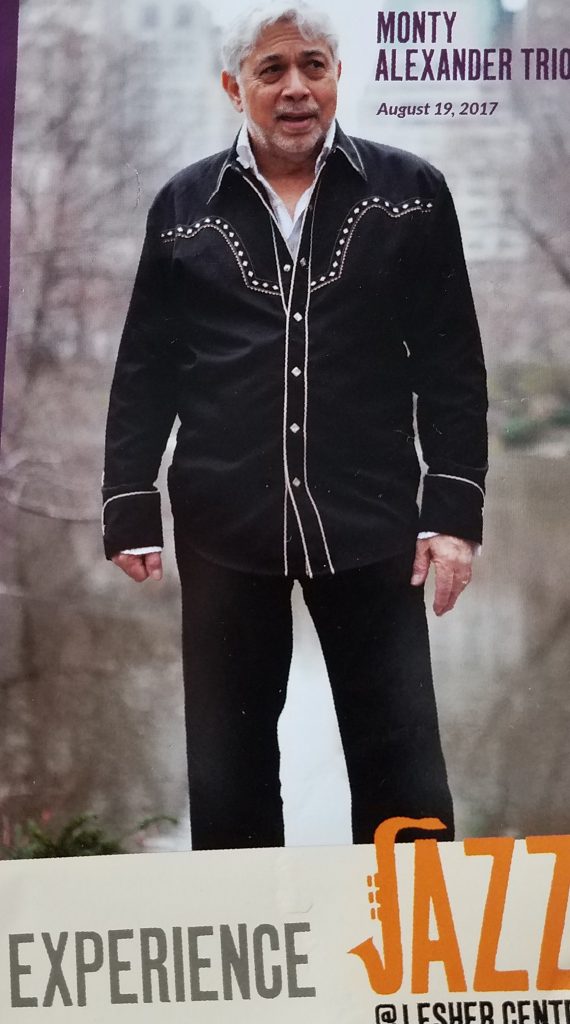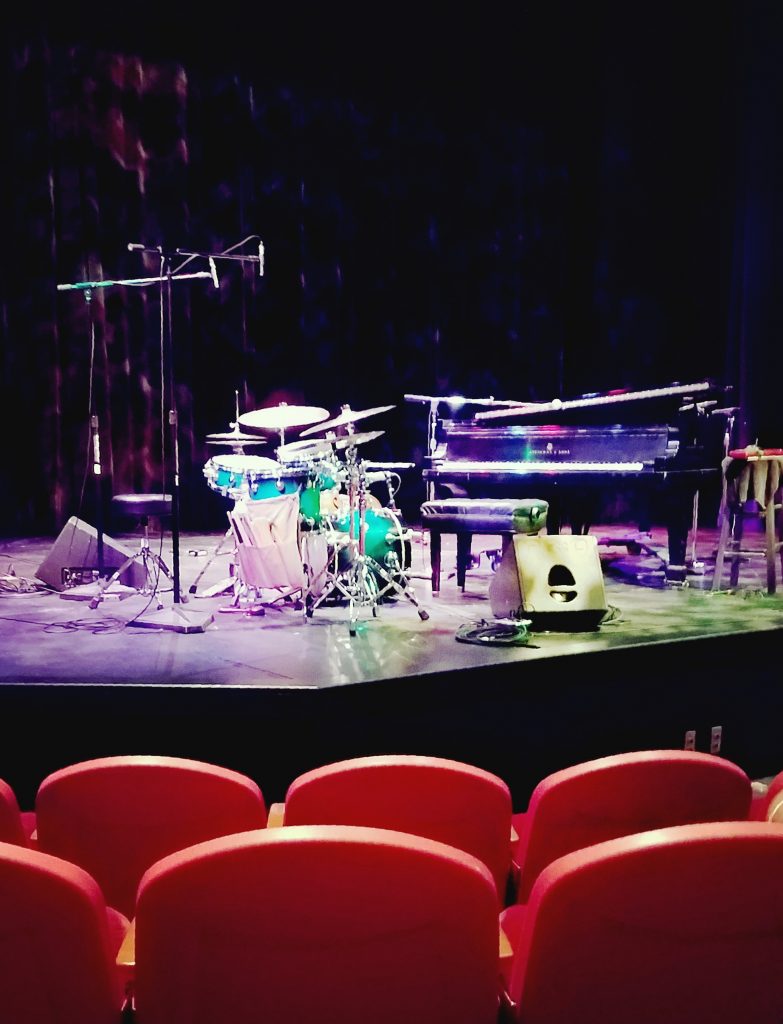 Another Saturday evening in August means that Becky and I were headed over to the Lescher Center in Walnut Creek, CA to hear Jazz. We started the evening by going to the Walnut Creek Yacht Club for the best seafood in the SF Bay Area. By the way, if you live in the Bay Area stay away from the Yacht Club, it’s hard enough to get a reservation already. I’m kidding, Ellen McCarty and Kevin Weinberg have been on a mission for 20 years to bring the finest and freshest from the sea to Walnut Creek. They know Walnut Creek is landlocked, but they call it a yacht club because they want to bring the atmosphere of a day on the Bay to Walnut Creek. Their decor includes many nautical touches: teak, mahogany, stainless steel, and even an authentic jib, which was a gift to Kevin from America’s Cup Defender, Alinghi. They have also been Michelin Guide recommended and are considered by most to be the best seafood restaurant in the East Bay.
Another Saturday evening in August means that Becky and I were headed over to the Lescher Center in Walnut Creek, CA to hear Jazz. We started the evening by going to the Walnut Creek Yacht Club for the best seafood in the SF Bay Area. By the way, if you live in the Bay Area stay away from the Yacht Club, it’s hard enough to get a reservation already. I’m kidding, Ellen McCarty and Kevin Weinberg have been on a mission for 20 years to bring the finest and freshest from the sea to Walnut Creek. They know Walnut Creek is landlocked, but they call it a yacht club because they want to bring the atmosphere of a day on the Bay to Walnut Creek. Their decor includes many nautical touches: teak, mahogany, stainless steel, and even an authentic jib, which was a gift to Kevin from America’s Cup Defender, Alinghi. They have also been Michelin Guide recommended and are considered by most to be the best seafood restaurant in the East Bay.
This Saturday evening we were out to hear the Monty Alexander Trio. Alexander, of course, was on piano; he was accompanied by the bassist, Hassan Shakur, and drummer, Jason Brown. Let me tell you this was a trio that could hold its own with any jazz trio down through time.
If you’re not familiar with Alexander, he has played with Miles Davis, Duke Ellington, Ray Brown, and Shelly Mann just to name a few. My favorite of his albums is from 1965, “Alexander the Great.” I’ve heard many of the albums where he was the pianist. None of them were better than last night’s performance.
I loved the way they would start on one song and just begin to improvise from one song to another. I would have called the opening number ‘Wilma and Fred Got Rhythm’ as it included some of The Flintstones theme song. While performing one of Alexander’s own compositions, “Renewal,” the bassist, Hassan Shakur, started to play “Eleanor Rigby,” then “In A Gadda Da Vida,” then a few other songs to conclude with “Fight of the Bumble Bee!”
Another one of Alexander’s compositions they played was “River,” a beautiful, meditative piece. He also did an amazing set of 1950s western matinee music. He shared how as a boy in Jamaica he used to put on his chaps, his holsters, cap pistols, and cowboy hat and go to watch the Saturday morning matinee of Roy Rogers and other singing cowboys. He said he would sit on the first row and fire his cap pistols at the screen. He ended that set with an audience sing-along of “Home on the Range”. What fun! For their encore, they played a medley of Jamaican songs that were equally enjoyable. If you get a chance to hear them live, don’t miss it.
Lessons for the Audiophile from the Performance

As Becky and I talked on the way home, I mentioned several things about the performance that made it so emotionally involved. Becky asked me how I knew these things and if most audiophiles would notice the same things. So, I’m sharing the following observations from my experience.
1. The piano and the bass were tuned on the warm side for the performance. As you can see from the picture of the stage, we were sitting close enough to hear the instruments more than the speakers. Most audiophile systems I hear are recessed in this area of warmth that made this event so moving.
2. Look at the picture again; see how close the drums and piano are to each other. Guess what, the bass player somehow manages to get in between them. If we were listening to this at home, most audiophiles would complain about the soundstage. We need to learn that not every recording should have a huge soundstage.
3. Even though the soundstage was not wide or deep, each instrument sounded three dimensional, big and with lots of space. Often it is scale and space we should be looking for instead of a deep and wide soundstage.
Keep on Boppin’ until next Saturday night!
